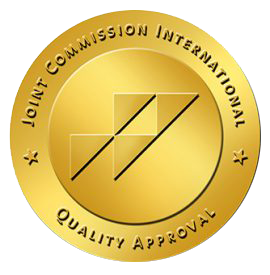Dr. Gilbert HELOU: Beware of the dangers of antibiotics misuse!
Many people take antibiotic therapy without consulting a specialized doctor for a clinical condition where antibiotics are not indicated. This misconception is due to the incapacity to differentiate between a viral and bacterial infection.
Dr. Gilbert El Helou, an Assistant Professor of Medicine and an Infectious Diseases specialist at Mount Lebanon Hospital, elucidates the major facts of viruses, bacteria, and their respective treatments, in addition to the hospital actions regarding infection control.
– Can bacteria and viruses be placed in one category, or are they separated?
There are many differences between a bacteria and a virus:
- Bacteria can be seen through a normal microscope, whereas viruses can only be seen through an electron microscope.
- Furthermore, antibiotics have no effect on viruses. They are used to treat bacterial infections.
- Most of the viral infections do not require treatment and are self-limited illnesses.
– Any symptomatic differences between a viral and a bacterial infection?
Flu Like symptoms include arthralgia, myalgia, fatigue, fever, dry cough, and runny nose and needs around seven days to convalesce, whether the patient is on an antibiotic therapy or not. However, if the symptoms persist for more than seven days, and the sputum’s color is yellow or green along with chest pain or shortness of breath, then a bacterial infection on top of viral should be ruled out. Bacterial superinfection is more common in smokers, patients known to have a COPD or an immunosuppression.
– There is a common belief that high grade fever point to a bacterial infection, is that true?
Many patients panic whenever having high grade fever and this is due to the old link between high body temperature and the typhoid fever or Undulant fever (brucellosis). However, it is important to note that these latter infections are bacterial. The typhoid fever is caused by the salmonella, and the brucellosis caused by the Brucella. But on the other hand, viral infections can similarly be associated with high grade fever, like the H1N1 viral infection.
– Can viruses be as dangerous as bacteria?
There are some aggressive viruses, especially in high risk population. The H1N1 influenza virus can be life threatening in pregnant women and immunocompromised patients.
– Is the flu vaccine an effective preventive method?
The efficacy of the influenza vaccine varies from one year to another. The vaccine contains modified virus species isolated from the preceding year. It is introduced into the body to enable the immune system to fight against it. The vaccine is required in patients at high risk, like smokers, COPD and immunocompromised patients, and healthcare workers.
– Drug-resistant bacteria are more common, what leads to the ineffectiveness of antibiotics on such bacteria?
Bacteria are micro-organisms that protect themselves whenever exposed to antibiotic therapy. Recurrent bacterial infections and multiple antibiotic courses can lead to the emergence of drug-resistant bacteria.
– Are there any new antibiotic agents that are active against multi-drug-resistant bacteria?
This subject is continuously a debate in international conferences because drug companies do not have a major interest in developing new antibiotics for many reasons. First, antibiotic treatment courses are short and limited in most of the cases compared to lifelong therapy for diabetes, hypertension and dyslipidemia. Moreover, all new broad spectrum antibiotics are on restricted usage in the hospitals and should be approved by an infectious diseases specialist. Finally, it takes many years and millions of dollars to develop a new antimicrobial agent that will be limited and under control in the health institutions, and whenever prescribed for a short period (which is not cost effective for the drug companies).
– How can we protect ourselves from dangerous bacteria?
There are many measures to prevent bacterial infections. For example, brucellosis is transmitted through consumption of unpasteurized milk and cheeses. Hence, milk pasteurization and strict control of the cows, goat and sheep in the farms can decrease the incidence of the infection. Regarding the typhoid bacteria, the basic steps of water refining and purification can prevent its spread. Finally, whenever available vaccination is also a key step in the prevention of bacterial infection.
– How can we preserve the favorable bacteria in the body?
There is a normal bacterial flora in the body which is very important to secure the balance. Misuse or overuse of antibiotic therapy can harm the bacteria present in the normal body flora. For instance, the unwarranted consumption of antibiotics in women can lead to the emergence of vaginal candidiasis due to the elimination of the natural vaginal bacterial flora.
– What distinguishes the Mount Lebanon Hospital, in terms of dealing with bacterial infections?
There are two main measures:
First, we have a firm antimicrobial restriction policy. Any broad spectrum antibiotic therapy should be approved by an infectious diseases specialist within 48 hours of the initiation of the treatment. And if not agreed, the pharmacy does not deliver it.
Second, the Infection Control Department at Mount Lebanon Hospital is very active and follows the international guidelines to avoid the emergence of multi-drug-resistant bacteria, eliminate their spread and eradicate the occurrence of nosocomial infections.
Leave a reply







